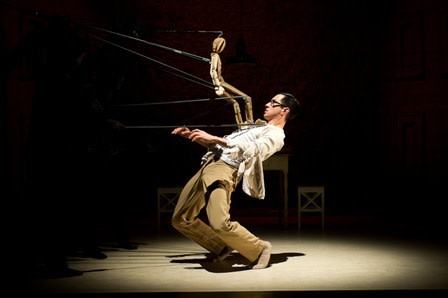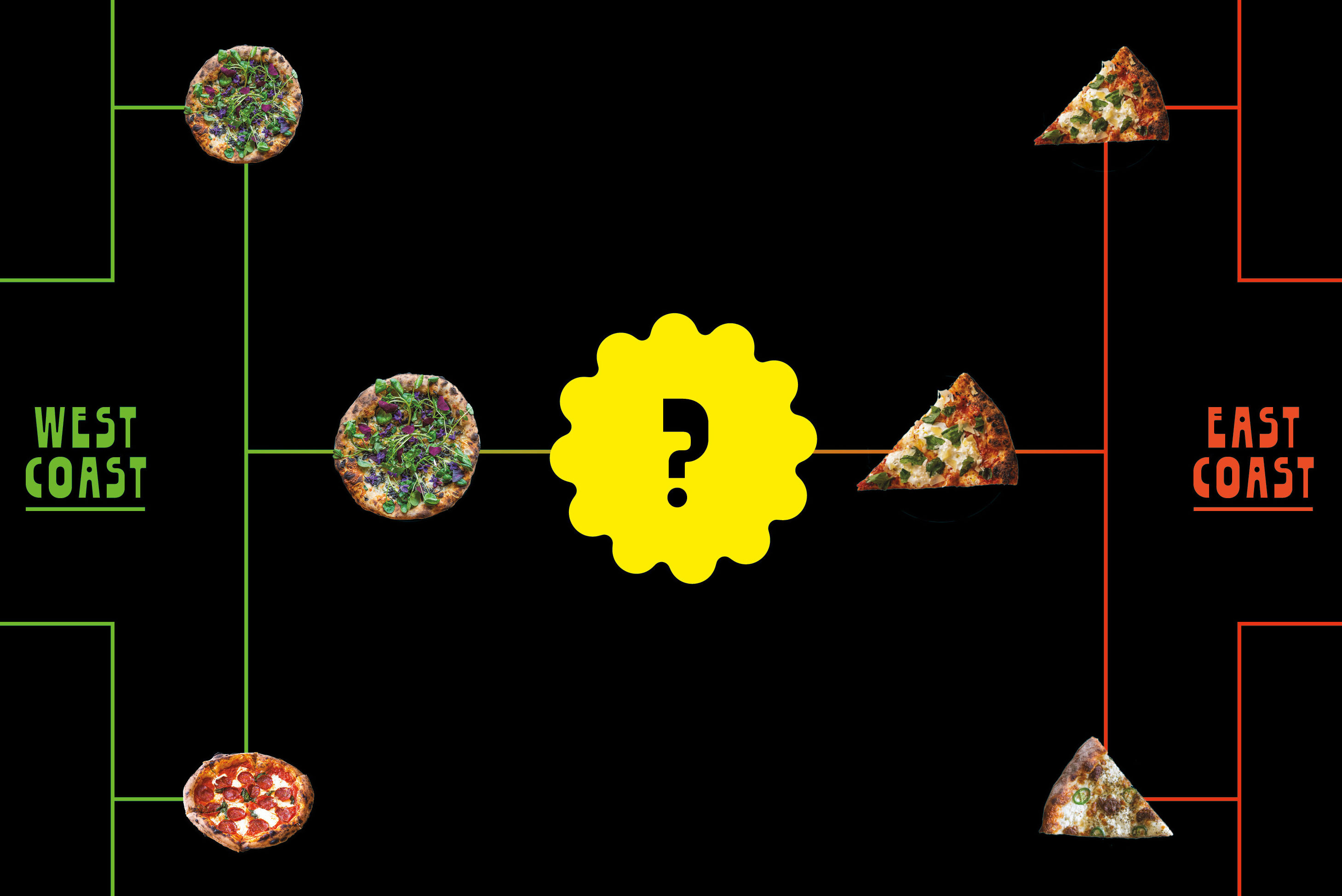Review: Kidd Pivot’s Dark Matters

Peter Chu plays a puppeteer manipulated by his puppet. Photo: Christopher Duggan
Despite drawing inspiration from an unseen element physicists postulate to make their model of the universe work, the dancers in Kidd Pivot Frankfurt RM’s new performance, Dark Matters, at the Newmark Theatre, seem entirely unencumbered by the laws of physics. Their bodies float through space and slide and roll across the ground like they’ve never known gravity or friction. “I wanted to try to find a way to make dark matter dance,” said choreographer Crystal Pite during a Q&A after the show, and dance it does.
The first half of the show tells the story of a puppeteer whose simple, humanoid creation of cardboard, tape, and pins comes to life. Expertly manipulated in a Japanese Buraku style by several dancers dressed like ninjas in black velour, the puppet becomes increasingly clingy and aggressive, until it finally attacks its maker. Puppet and puppeteer destroy each other, leaving the black-clad puppeteers to clean up. While the puppet narrative is dark and ominous—its cinematic lighting and sound design giving it the feel of a sci-fi horror film—the puppeteers quickly devolve into B-grade kung fu slapstick, ultimately tearing down the set, the lighting, and the backdrop, leaving a naked, destroyed theater.
The act ends with a hint of what’s to come: one of the black-clad puppeteers starts to pull and push the fallen original puppeteer, danced by Peter Chu, bringing him to life just as he did his puppet. Originally trained as a gymnast, Chu moves his lithe, lanky frame with impossible grace. Bending, folding, and rising like he is being pulled, isolating and floating body parts like they hang from strings, he gives complete illusion that he is a marionette danced by the puppeteer. The duet is so spectacular, his control of his body so masterful, that audible gasps and ahhs escaped from the audience.
While visually stunning and conceptually rich—Who really is puppet, and who puppeteer? What sort of unknown forces are at work pulling our strings?—the first half also felt slow and not fully thought through. The ominous nature of the puppet narrative didn’t quite mesh with the later slapstick kung fu comedy. During the Q&A, Pite said that she wanted the puppeteers to subvert and undermine the show. An intriguing idea, but I don’t think they’re quite there yet. At least, not in the first half.
The second half is a complex, mesmerizingly beautiful series of dances that further explores the themes of unknown forces, control, and manipulation. Mixing modern dance elements with freestyle, improvisational, and street/rave dance styles, the dancers manipulate themselves and each other like puppets, getting tangled up in human puzzles that are simultaneously cooperative and competitive. They flow like water, twisting around each other; popping, locking, and isolating body parts; rolling across the floor. We can hear their exhales, but their movement is so graceful and light that rarely do we hear their feet and bodies touch the ground.
In the final duet, the last black-clad puppeteer (Sandra Marìn Garci) removes her suit, and Chu reverses the roles of their last duet, manipulating and dancing this shadow that had earlier manipulated him. Slowly they begin to help each other to dance, their equally long, slender limbs pulling, twisting, and flowing around the other as something akin to love builds between them. It is a truly breathtaking and glorious performance to watch.
Few dance performances can sustain two hours, either on the part of the audience’s attention or the physical capacity of the performers. But Kidd Pivot’s expert artists—bolstered by a cinematically rich lighting design and soundscape of loops, fades, and effects—held the audience rapt, needing no strings to make our emotions and imaginations dance.
For more about Portland arts, visit PoMo’s Arts & Entertainment Calendar, stream content with an RSS feed, or sign up for our weekly On The Town Newsletter!




